TheBird Photographer of the Year 2023 winners have been unveiled. Photographers from all over the world entered more than 20,000 images into the competition, each with their eyes on the £5,000 grand prize. But who were the winners?
An image of a peregrine falcon tackling a brown pelican that ventured too close to its nest has taken the grand prize in the world’s largest bird photography competition.
Photographer Jack Zhi, from the USA, was declared this year’s grand prize winner for his dramatic image takenin Southern California. He also took the prize for Best Bird Behaviour photograph
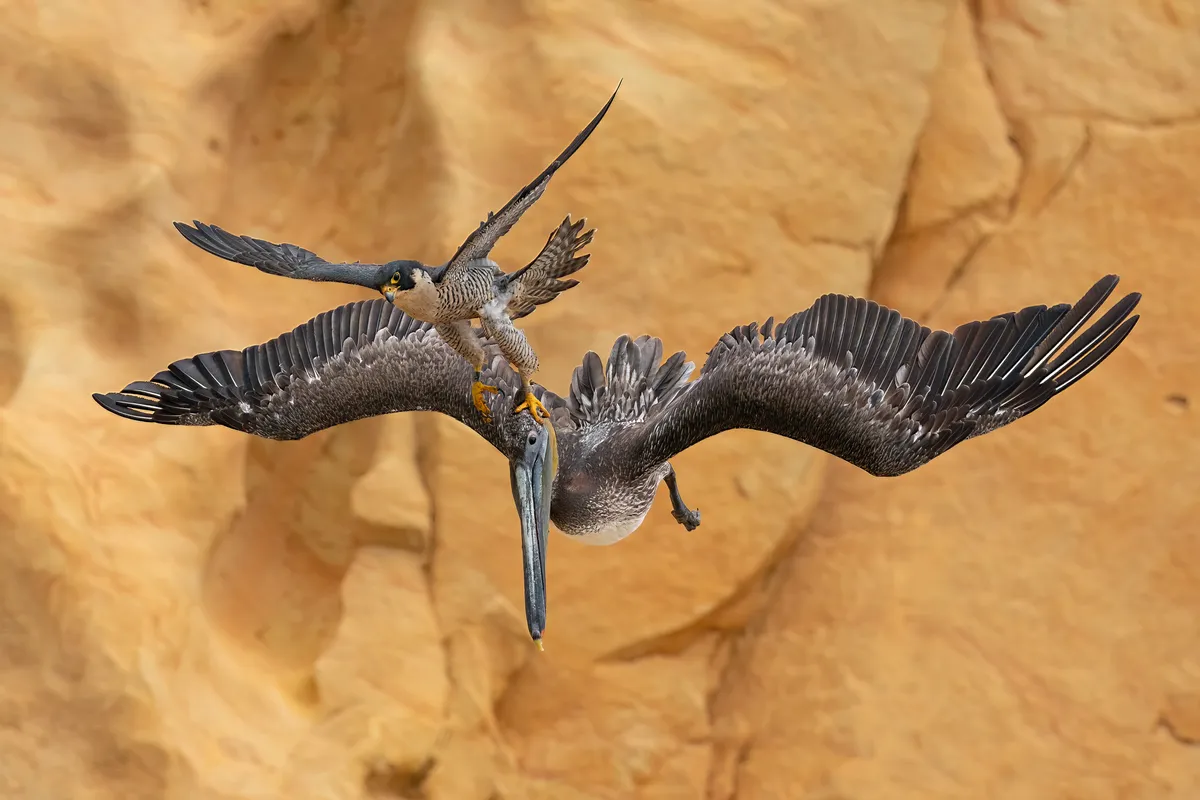
“For four years, I attempted to capture the rare sight of the female falcon attacking large brown pelicans withincredible speed and agility,” says Zhi. “I love the eyes of the pelican in this image-surprised and scared. Theaction was fast, and over in the blink of an eye. But I’ll remember that moment forever.”
“Each image is not merely a testament to the immense talent of our photographers, but a poignant reminder of the breathtaking beauty of birds,” says Will Nicholls, Director of Bird Photographer of the Year. “The astonishing calibre of these photographs underscores a vital message: let us champion the cause of conservation, so that future generations can marvel at the real-life inspirations behind these extraordinary images.”
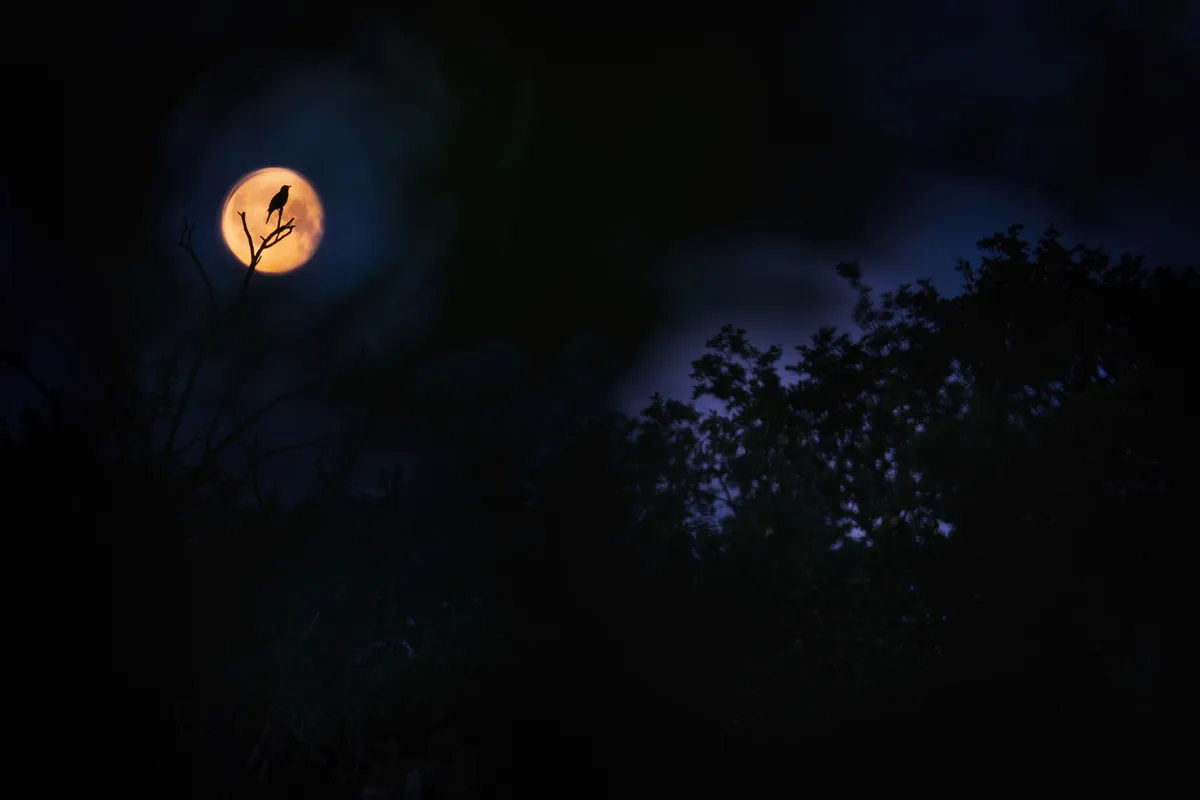
The Young Bird Photographer of the Year 2023 was awarded to 17-year-old German photographer Anton Trexler for his incredibly atmospheric image of a blackbird silhouetted against the moon.
Photographers competed in 8 different categories in the adult competition: Best Portrait, Birds in the Environment, Bird Behaviour, Birds in Flight, Black and White, Urban Birds, Conservation (Single Image), and Comedy Bird Photo. There was also a Conservation Award, Portfolio Award, and Video Award.
The category winners
Urban bird winner
Great Grey Owl Strix nebulosa. Helsinki, Finland
Arto Leppänen, Finland.
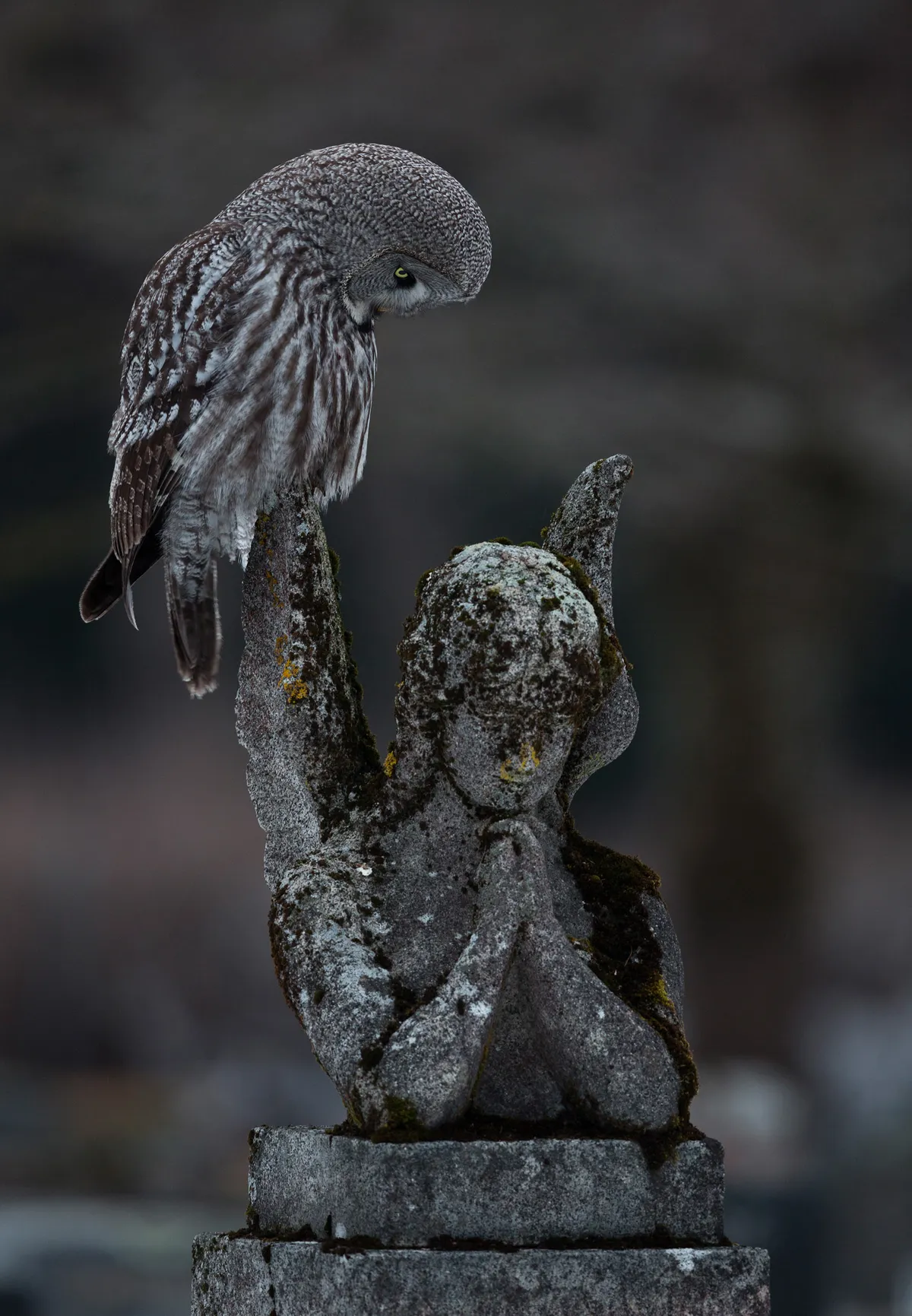
'During winter migration, owls from northern Finland often head to the south where they can find more food due to less snow. This Great Grey Owl chose a cemetery with abundant voles as its hunting ground. While hunting, the owl would often stop on tombstones or other structures to observe the area.
'Keeping a safe distance, I followed the owl and managed to capture a fleeting moment when it landed briefly on a beautiful angel statue.'
Canon EOS 5D Mark III with Canon 600mm f/4 lens. 600mm; 1/50s; f/5; ISO 1,600.
Comedy bird winner
Purple Heron Ardea purpurea. Lake Chiusi, Italy.
Antonio Aguti, Italy.
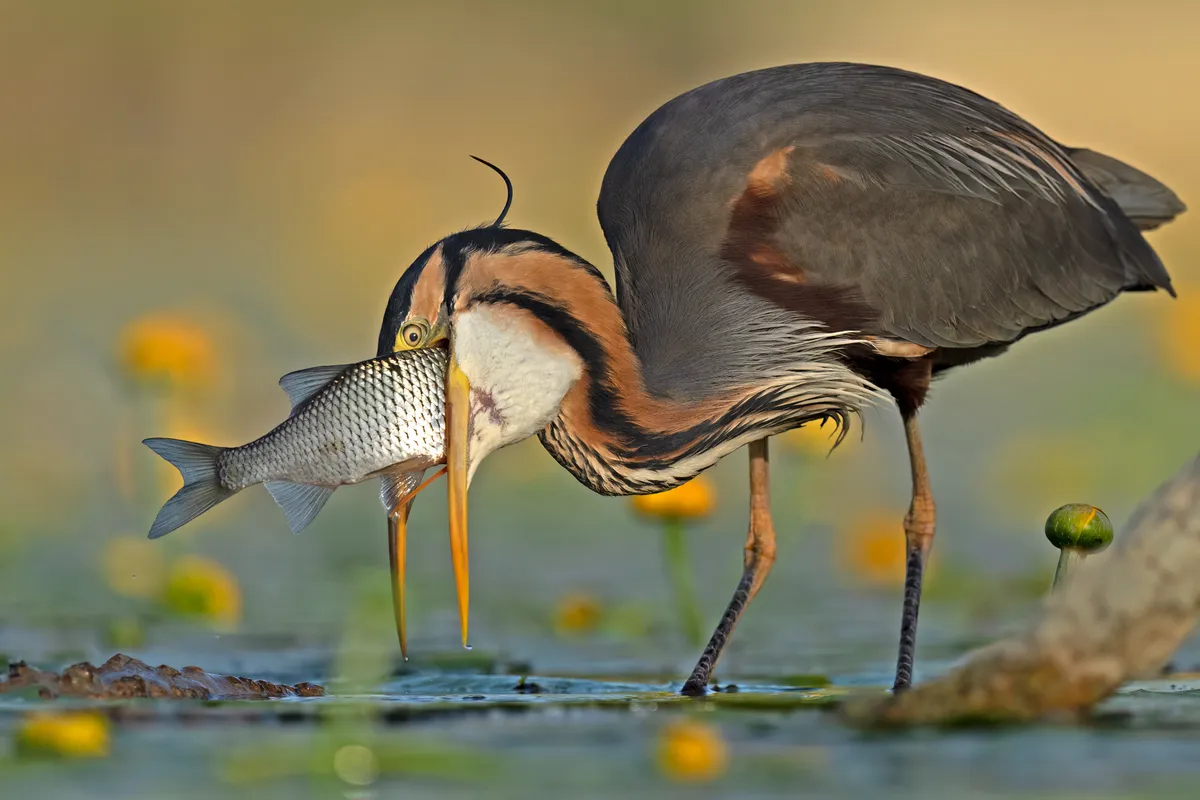
The Purple Heron is a migratory bird that nests in the lake basins of the Italian Peninsula and feeds mainly on fish, although it also preys on mice, snakes, toads and other creatures. In this shot, the heron caught a large Crucian Carp (Carassius carassius) and voraciously swallowed it after several attempts to turn the fish onto its side.
Sony A1 with Sony 600mm f/4 GM lens. 600mm; 1/4,000s; f/4; ISO 320.
Black and white winner
Musk Duck Biziura lobata. Perth, Australia.
Jason Moore, Australia
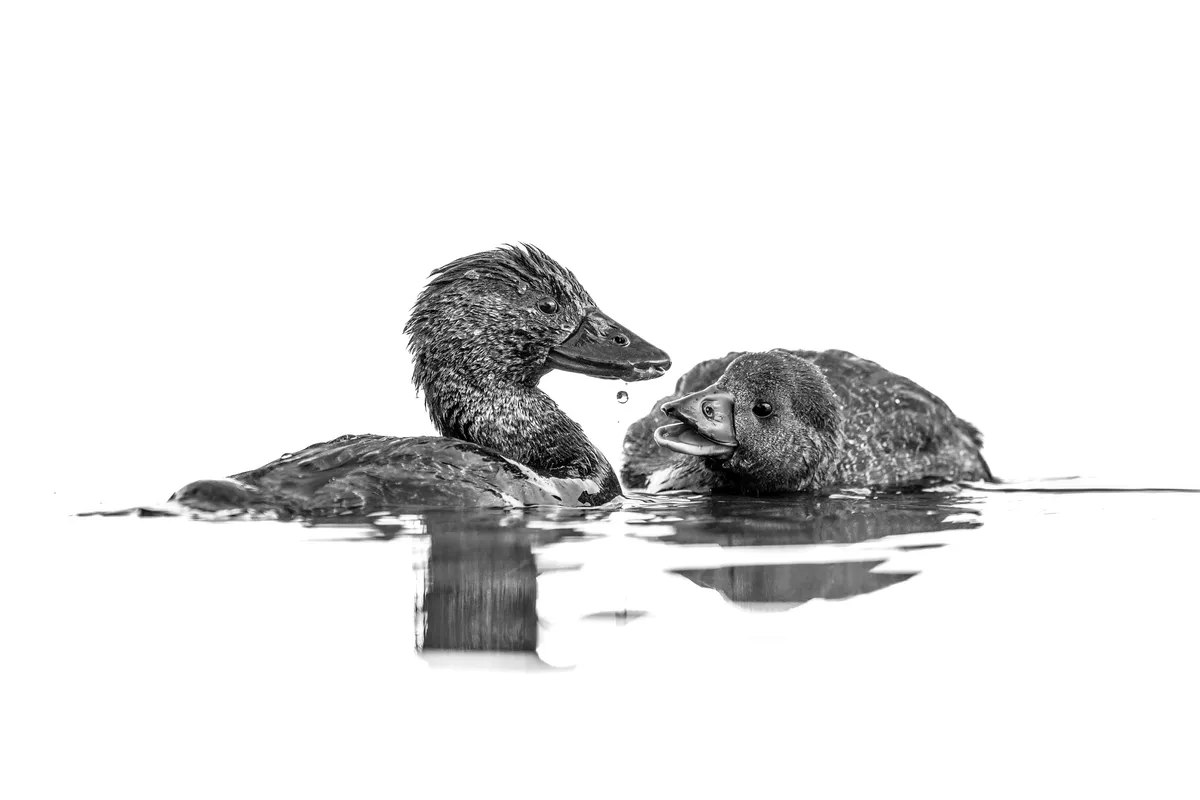
'A young Musk Duck seems mesmerised by a drop of water falling from its mother’s mouth. Of course, it’s actually interested in the morsel of food that she has in her bill. Their coloration may be drab, but they more than make up for it with their beautiful expressions and fascinating displays.'
Sony A1 with Sony 600mm f/4 G lens. 600mm; 1/1,250s; f/4; ISO 1,600.
Birds in the Environment winner
Brambling Fringilla montifringilla. Lower Silesia, Poland.
Mateusz Piesiak, Poland.

'Flooding meant that a field of sunflowers could not be harvested, and thousands of birds, including Greenfinches (Chloris chloris), Goldfinches (Carduelis carduelis) and Bramblings, flocked to it in winter.
'Despite their colourful plumage making them easy targets, when foraging their colours blend with the surroundings, making them hard for predators to spot. Using a wide- angle lens masked with snow and dried sunflowers, I photographed a flock of Bramblings from their perspective, with one perched in front of my camera.'
Fujifilm X-T2 with Fujifilm 10–24mm f/4 lens. 10mm; 1/680s; f/11; ISO 1,600.
Birds in flight winner
Sword-billed Hummingbird Ensifera ensifera. Bogotá, Colombia.
Rafael Armada, Spain.
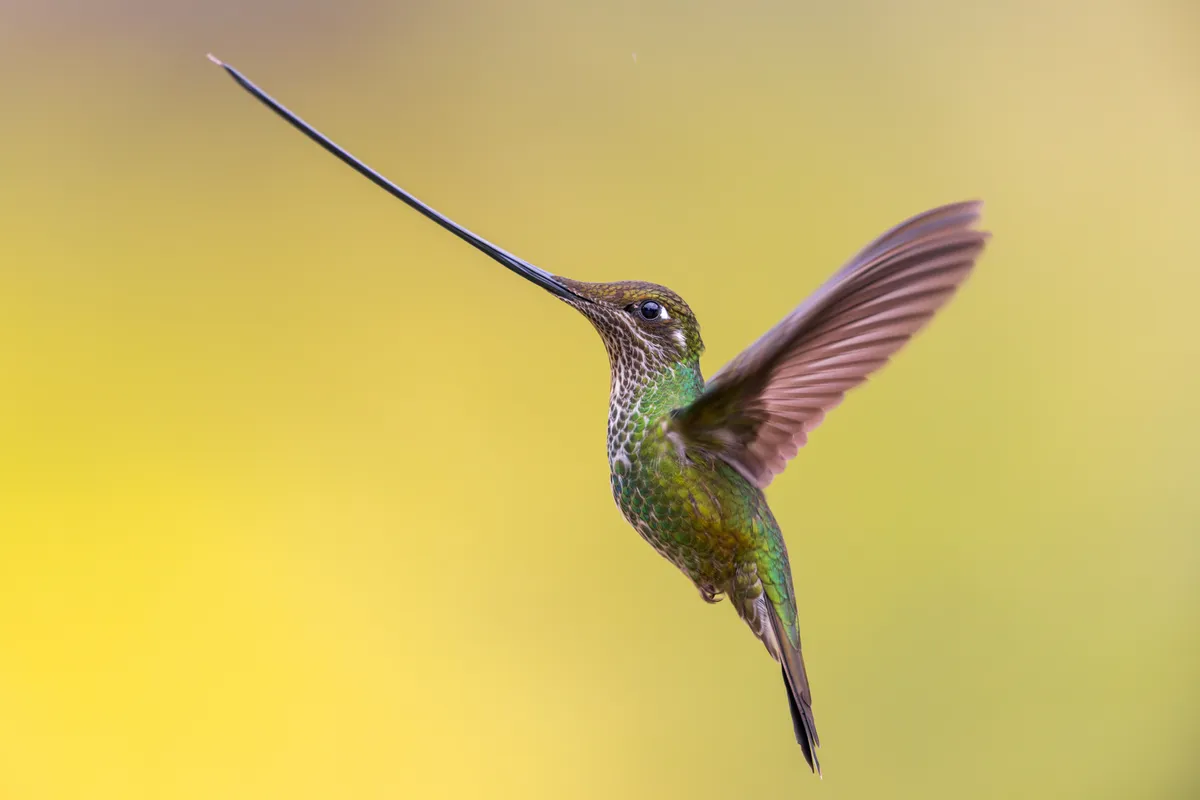
The Sword-billed Hummingbird, common in the Andean forests, has the world’s longest bill relative to its size. This bird’s unique bill, adapted to feed on flowers with long corollas, makes it a vital pollinator, as bees and butterflies can’t reach the nectar and so don’t pollinate these plants. This image captures the bird approaching a feeder, with natural backgrounds and lighting.
The sword-billed hummingbird has the longest beak in the world
Canon EOS R5 with Canon 600mm f/4 III lens. 600mm; 1/1,000s; f/4; ISO 5,000.
Bird portrait winner
Glistening-green Tanager Chlorochrysa phoenicotis. Mashpi Amagusa Reserve, Ecuador.
Nicolas Reusens, Spain
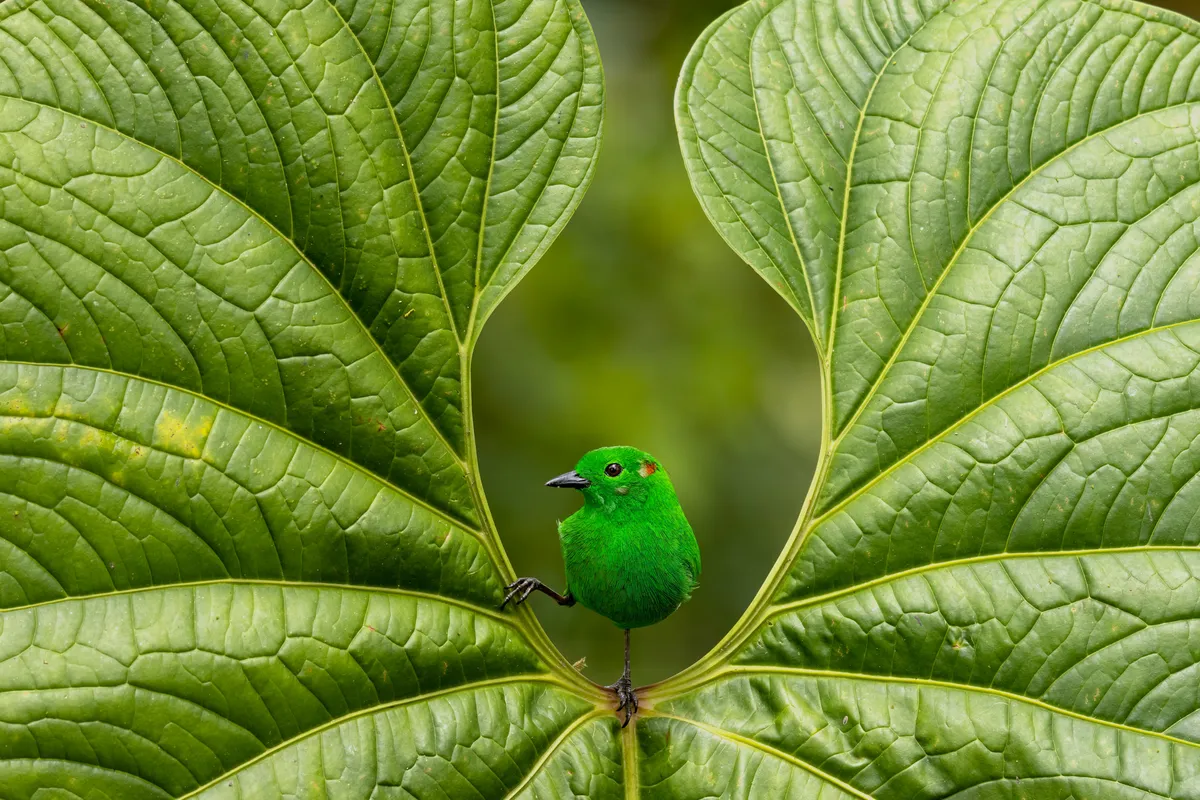
Venturing into the tropical forest, I was excited to spot the rare Glistening-green Tanager. After hours of waiting, I saw the vivid-green bird on a perfect heart-shaped leaf. Its shimmering feathers reflected a dazzling array of colours. I captured every detail, grateful for this magical moment amid the lush jungle backdrop.
Canon EOS R7 with Tamron 100–400mm f/4.5–6.3 lens. 213mm; 1/500s; f/7.1; ISO 400.
12-14 years old winner
Arctic Tern Sterna paradisaea and Common Tern Sterna hirundo. Örnsköldsvik,Sweden.
Harry Sedin, Sweden.
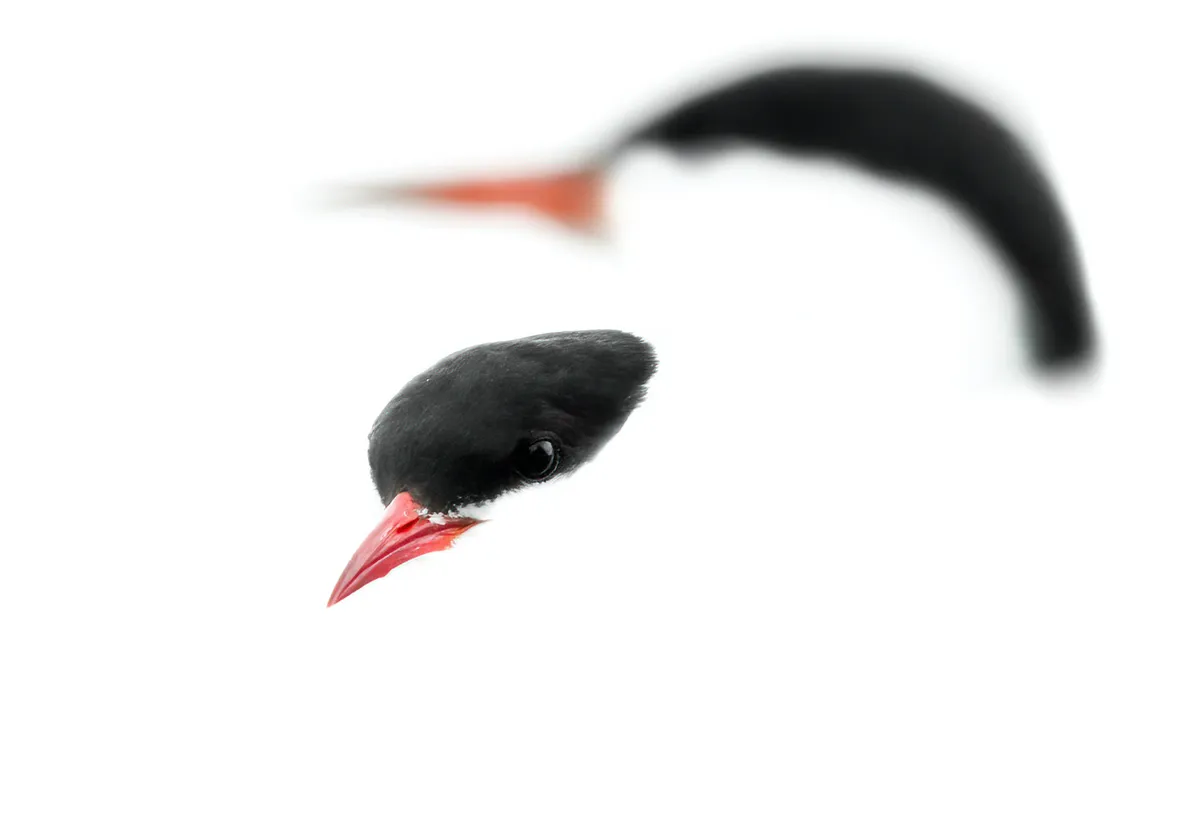
In a small inlet in Örnsköldsvik, there are terns everywhere during summer.So, one afternoon on an overcast day, I headed down to the water with the goal of photographing terns in flight.Instead of that, I ended up photographing an Arctic and Common Tern perched together on a railing. By utilisingthe white of their bodies, the overcast weather and the bright reflections in the water, I captured a high-key image of the two terns.
NikonCoolpix P1000. 324mm; 1/100s; f/8; ISO 200
11 and under winner
Verditer Flycatcher Eumyias thalassinus. Pelling, Sikkim, India.
Arko Saha, India.
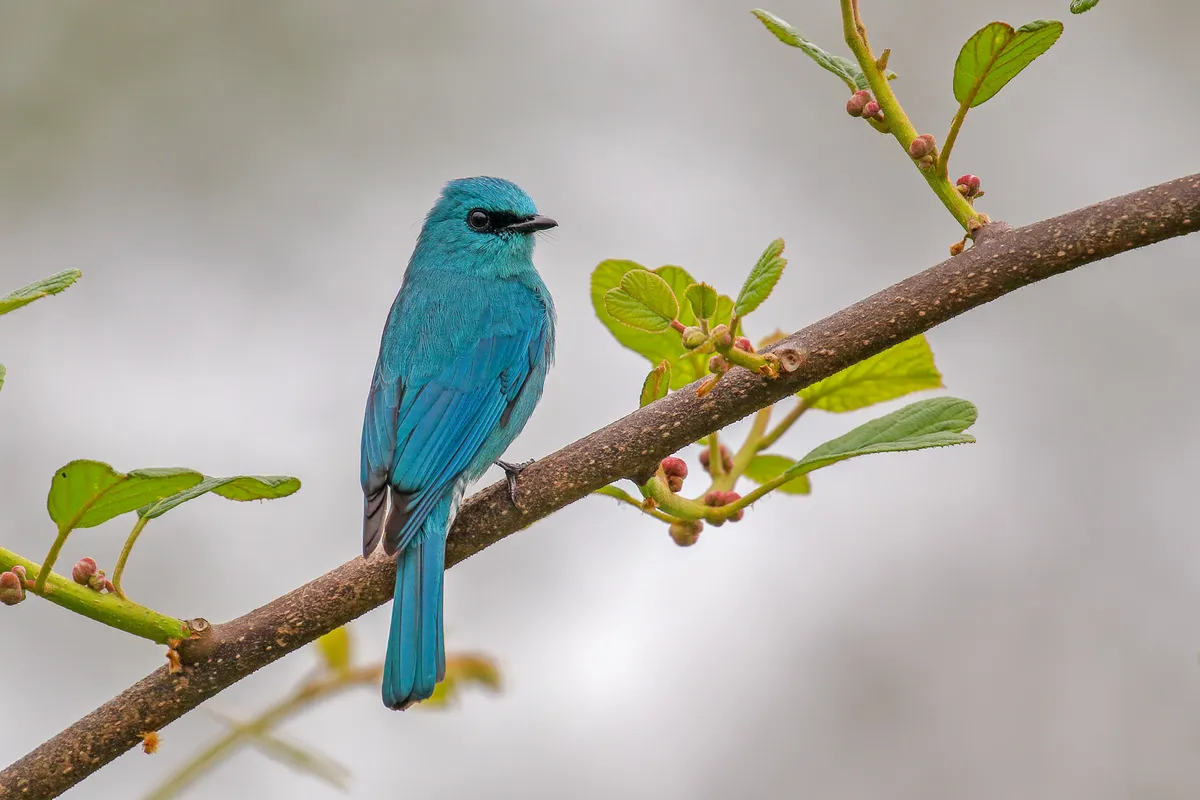
Pelling is one of the most beautiful hill stations in India. I observed so many birds when I visited the area. I snapped this very colourful bird in a garden near our hotel. The extremely vibrant blue colour makes this bird so beautiful.
Canon EOS 80D with Canon 100–400mm f/4.5–5.6 II lens. 400mm; 1/400s; f/5.6; ISO 500.
Conservation winner
European Turtle Dove Streptopelia turtur. Southern Malta.
Ewan Heath-Flynn, United Kingdom.
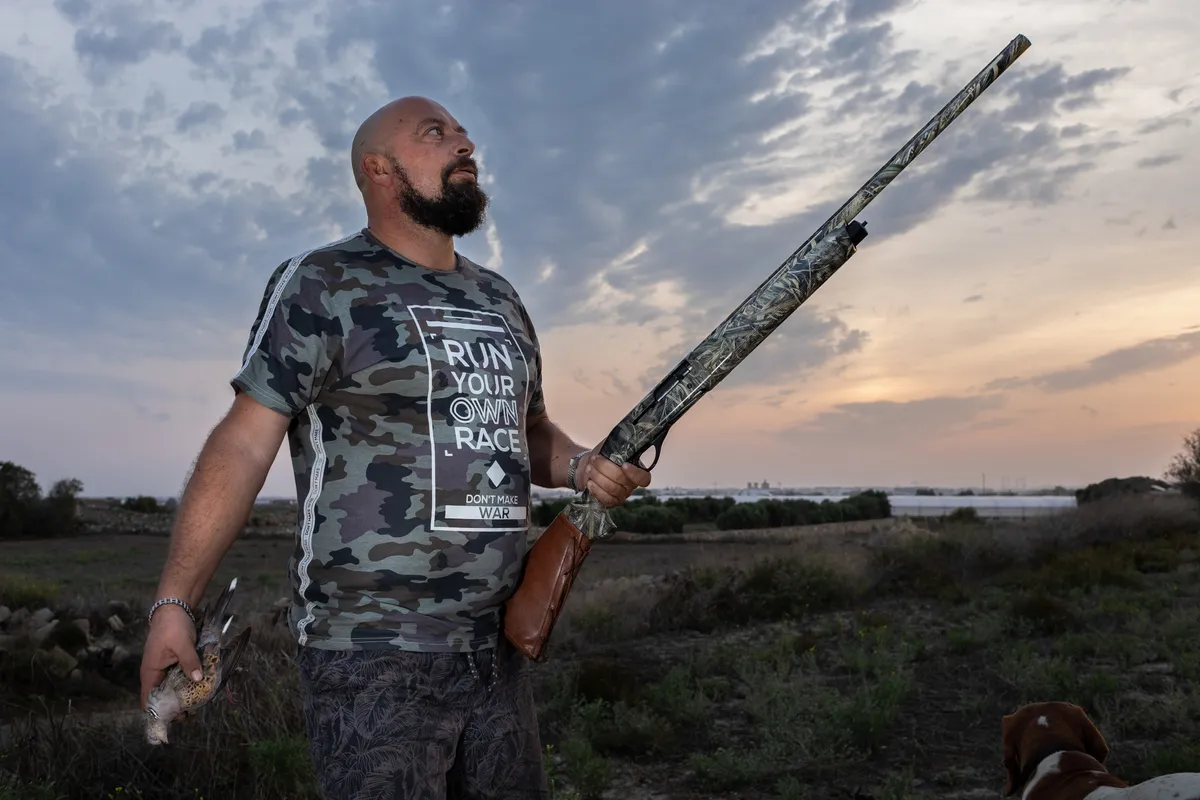
'A Maltese hunter stands proud, having legally shot a European Turtle Dove, a prized quarry on the island. European Union legislation bans the hunting of Turtle Doves in the breeding season.
'Nevertheless, across the Mediterranean, an estimated 0.34–0.87 million are killed every year. Generations of Maltese have hunted this species on migration; a few continue to hunt and follow tradition. In 2017, Malta introduced a spring hunting moratorium, which left some hunters feeling their ‘traditional’ way of life had been spoilt.
'Unfortunately, the ban was lifted in 2022, allowing European Turtle Doves to be killed once again. The decision has the potential to dramatically impact and further damage this beautiful bird’s chances of survival and drive it further towards extinction. BirdLife International and their partner BirdLife Malta both condemn the hunting.'
Canon EOS 5D Mark IV with Canon 35mm f/2 lens. 35mm; 1/200s; f/8; ISO 800.
Bird Photographer of the Year has conservation at its heart. This year, the competition donated £5,000 to partner charity Birds on the Brink, which provides vital funding to grass-roots bird conservation projects around the world. (www.birdsonthebrink.co.uk)
All awarded images are published by William Collins in a hard-back coffee-table book, which is now available online at birdpoty.com. Foreword by wildlife cameraman and presenter Gordon Buchanan (HB, £30).
The 2024 competition is now open for entries at birdpoty.com, and invites photographers of all experience levels to submit their best bird photos.